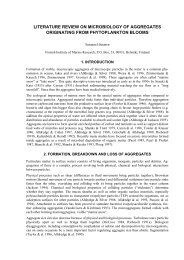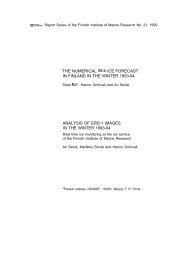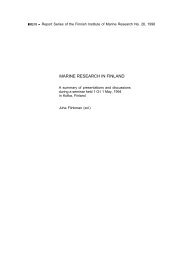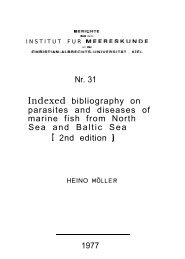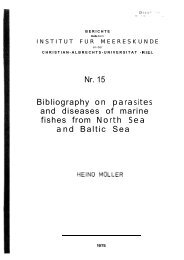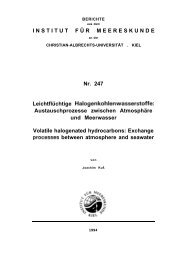BALTIC SEA ENVIRONMENT PROCEEDINGS No. 80
BALTIC SEA ENVIRONMENT PROCEEDINGS No. 80
BALTIC SEA ENVIRONMENT PROCEEDINGS No. 80
- No tags were found...
You also want an ePaper? Increase the reach of your titles
YUMPU automatically turns print PDFs into web optimized ePapers that Google loves.
Fig. 5. Location of the sampling stations.Station XV-l is situated in the eastern Gulf of Finland and represents an area where the amount of falloutnuclides in sediments is higher than at any of the other stations already mentioned. Anoxic conditionsfrequently occur in this basin too, where the sediment is very watery and consists mainly of blacksulphidic mud.The samples were sectioned into 1,2 or 5 cm thick slices on board immediately after the sampling usingthe particular sectioning equipment and technique varying according to the device (see below). If morethan one slice was needed for analysis, parallel sections from an appropriate number of core tubes orbarrels were combined and placed in plastic boxes or bags, which were then (without delay) stored infreezer boxes on board. Before analysis the samples were freeze-dried and homogenised.All the sediment slices were analysed for gamma-emitting radionuclides and some of them also for Pu-238, Pu-239,240 and Am-241. Each laboratory analysed its own samples using its own standardmethods. The quality of analysis at each laboratory is currently controlled in intercalibration exercisesarranged by the Marine Environment Laboratory (MEL) of the International Atomic Energy Agency(IAEA), Monaco (Ballestra et al., 1995).8




